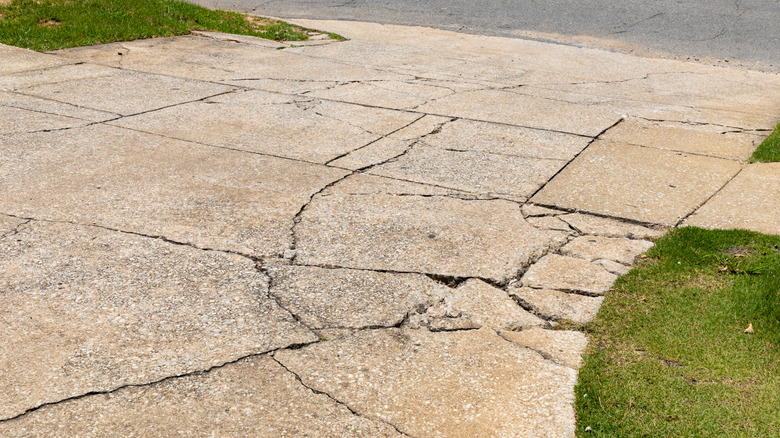Is Your Concrete Driveway Crumbling? Here's Why And How To Fix It
Concrete is a very popular material for driveways. It's affordable and hard-wearing, andcan either be left as a plain slab for a clean, modern look or colored, textured, or stamped to suit homes of different periods. It's one of a number of creative ways to increase your home's curb appeal. Unfortunately, it's not indestructible, and concrete driveways can crack and crumble. Even slight damage that's left unattended can deteriorate rapidly, and the last thing you want is to be looking at how much it costs to pave a new driveway completely. It's important to understand the likely cause before you repair it, or the problem could repeat itself.
A concrete driveway that was properly installed should last anywhere from 10 to 25 years, though it will wear eventually. It can break up earlier if not mixed or poured correctly. If water gets into small cracks and then freezes and thaws repeatedly, it will start to crumble. Excessive vehicle weights can have this effect as well. A standard 4-inch driveway has a load limit of around 8,000 pounds, which is fine for cars but not for RVs and other heavy vehicles. Salt, oil, and other chemicals can also attack the structure, and tree roots can cause damage, as they can extend two to three times further than the branches. If a crumbling concrete driveway is caught early, there are crack fillers and patch products available to fix it from DIY stores and online. However, severe damage will likely require professional assistance.
How to fix a crumbling concrete driveway and when to call in the pros
Preparation is key to a successful concrete driveway repair. First, clean the damaged area with a pressure washer, then once it's dry, remove any loose or crumbling concrete. Use a hammer and chisel if necessary. Once you are back to solid concrete, you can apply your product of choice. If you're dealing with a small crack, some products can simply be squeezed in. Those for larger patches may combine fiberglass and epoxy resin. You should spend some time assessing which is best for your particular problem, and always follow the instructions precisely (including any safety precautions). Additionally, before you start, make sure you're wearing goggles and gloves. Finish by applying a concrete sealer over the whole driveway to give it increased protection from the weather and accidental spills.
If you're concerned that the damage may be more extensive than just a little crumbling or a couple of cracks, you may want to call in a professional from the start. For example, if there are parts of the driveway that sound hollow when you knock on them, there is likely a void underneath, and a repour could be the only solution. It's definitely a good idea to get advice if your fix fails after only a few weeks, or further crumbling appears in several different spots. Although it's not common, concrete is just not suitable for some locations, which gives you the opportunity to think about more eco-friendly options to repave it, such as using recycled rubber, grass, or natural stone pavers.

